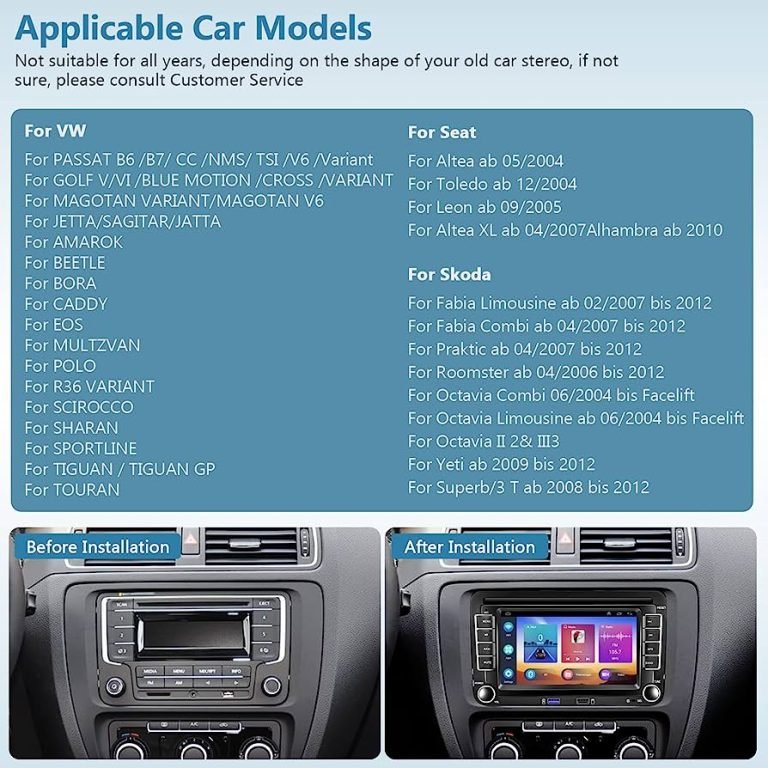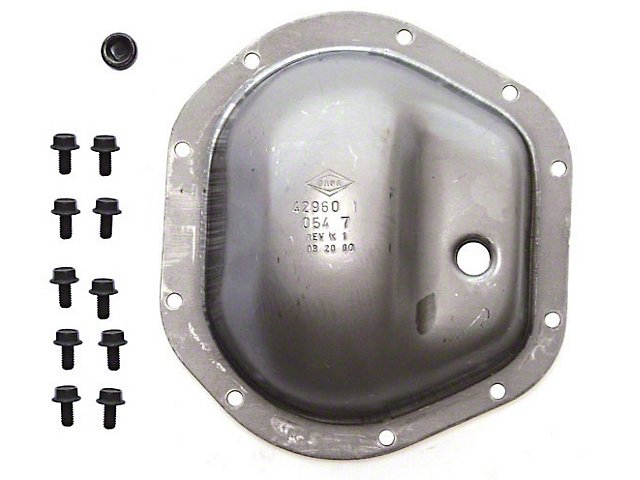Ford Kuga Turbo Problems: Troubleshooting Tips for Reliable Performance
The ford kuga turbo may experience various issues, including turbo failure and oil leaks. Despite its strengths, these problems can lead to costly repairs and inconvenience for owners.

Credit: www.ecutesting.com
Common Issues With Ford Kuga Turbo
The ford kuga turbo is a popular choice for those seeking power and performance in an suv. However, like any vehicle, it is not without its flaws. In this section, we will address some common issues with the ford kuga turbo, focusing on lack of power, excessive exhaust smoke, and turbocharger whining noise.
So, if you’re a proud kuga turbo owner or considering purchasing one, it’s important to be aware of these potential problems and know how to address them. Let’s dive in and explore each of these issues in more detail.
Troubleshooting Tips For Lack Of Power
Check For Air Leaks
Are you experiencing a lack of power in your ford kuga turbo? Don’t worry, it’s a common issue that can often be resolved with a few troubleshooting steps. One potential culprit for this problem could be air leaks in the engine system.
Here are some key points to keep in mind when checking for air leaks:
- Inspect the intake manifold and all hoses connected to it for any signs of cracks or loose connections. Air leaks in these areas can disrupt the air-to-fuel ratio, leading to decreased power output.
- Utilize a can of carburetor cleaner or a similar product to spray around the intake manifold while the engine is running. If the engine rpms increase or there’s a noticeable change in idle speed, it could indicate a leak in that area.
- Another area to check is the rubber gasket between the mass airflow sensor and the throttle body. Any damage or deterioration in this gasket can lead to air leaks and subsequent power loss.
- Ensure that the breather hoses and pcv (positive crankcase ventilation) valve are in good condition and properly connected. These components are crucial for maintaining proper airflow and preventing air leaks.
By addressing any potential air leaks in your ford kuga turbo’s engine system, you can restore power and improve performance.
Inspect The Intercooler
Another possible reason for the lack of power in your ford kuga turbo could be issues with the intercooler. The intercooler is responsible for cooling down the compressed air from the turbocharger, improving its density before it enters the engine.
Here are a few key points to consider when inspecting the intercooler:
- Start by visually examining the intercooler for any signs of physical damage such as dents, cracks, or leaks. Any damage to the intercooler can hinder its ability to cool down the compressed air properly.
- Check the connections and hoses connected to the intercooler to ensure they are secure and free from any leaks. Any air leaks in these connections can affect the performance of the intercooler and result in reduced power output.
- If you suspect that the intercooler may be clogged with dirt, debris, or oil, it’s important to clean it thoroughly. Use a suitable cleaning solution and follow the manufacturer’s instructions to ensure proper cleaning without causing any damage.
- Consider upgrading to an aftermarket intercooler if you frequently experience power loss issues. Performance intercoolers often offer better cooling efficiency and can handle higher boost pressures, resulting in improved power delivery.
Taking the time to inspect and address any intercooler-related problems can significantly improve the power and overall performance of your ford kuga turbo.
Test The Boost Pressure Sensor
If you’re still experiencing a lack of power in your ford kuga turbo, the boost pressure sensor could be to blame. The boost pressure sensor is responsible for monitoring the pressure of the compressed air from the turbocharger. Here’s what you need to know when testing the boost pressure sensor:
- Locate the boost pressure sensor, which is typically mounted on or near the intake manifold. It should have an electrical connector attached to it.
- Inspect the electrical connector to ensure it’s securely connected and free from any damage or corrosion. A poor connection or faulty wiring can cause inaccurate readings from the sensor.
- Use a multimeter to test the sensor’s output voltage. Consult your vehicle’s service manual for the specific voltage values that should be present under various engine conditions.
- If the sensor is providing incorrect readings or no voltage output, it may be faulty and require replacement. Consider consulting a professional mechanic or referring to your vehicle’s service manual for detailed troubleshooting steps.
By testing the boost pressure sensor and replacing it if necessary, you can address any power loss issues stemming from sensor malfunction in your ford kuga turbo.
Fixing Excessive Exhaust Smoke
Excessive exhaust smoke is not only an eyesore but also a sign of potential problems with your ford kuga’s turbocharger. If you’ve noticed thick, billowing smoke coming from your exhaust, don’t worry – there are a few steps you can take to diagnose and fix the issue.
In this section, we’ll explore how to evaluate the turbocharger oil seal, examine the turbocharger shaft, and clean or replace fouled fuel injectors.
Evaluate The Turbocharger Oil Seal
One possible cause of excessive exhaust smoke is a faulty turbocharger oil seal. If this seal is damaged or worn out, it can allow oil to leak into the turbocharger and ultimately be burned in the combustion process. To evaluate the oil seal:
- Inspect the area around the turbocharger for any signs of oil leaks.
- Look for excessive oil consumption, as this can also be a symptom of a faulty oil seal.
- If you suspect a problem with the oil seal, it’s best to consult a professional mechanic who can diagnose and repair the issue.
Examine The Turbocharger Shaft
Another potential culprit for excessive exhaust smoke is a worn or damaged turbocharger shaft. The shaft connects the compressor wheel to the turbine wheel and helps regulate the airflow in the turbocharger. To examine the shaft:
- Inspect the turbocharger for any visible signs of damage or wear on the shaft.
- Check for any shaft play by gently moving the compressor wheel back and forth. Excessive movement can indicate a worn or damaged shaft.
- If you suspect a problem with the shaft, it’s crucial to have it repaired or replaced by a qualified technician to ensure proper functioning of your turbocharger.
Clean Or Replace Fouled Fuel Injectors
Fouled fuel injectors can also contribute to excessive exhaust smoke. Over time, injectors can become clogged with dirt, debris, or carbon buildup, affecting the fuel spray pattern and combustion efficiency. To clean or replace fouled fuel injectors:
- Use a reputable fuel injector cleaner to remove any deposits or contaminants. Follow the product instructions for best results.
- If cleaning doesn’t resolve the issue, it might be necessary to replace the fuel injectors altogether. Consult a mechanic to determine the best course of action for your specific situation.
Remember, diagnosing and repairing turbocharger-related problems can be complex, so it’s always a good idea to seek professional assistance if you’re unsure or uncomfortable with performing these tasks yourself. Taking the time to address excessive exhaust smoke can help keep your ford kuga running smoothly and efficiently.
Resolving Turbocharger Whining Noise
Is your ford kuga experiencing an annoying whining noise coming from the turbocharger? Don’t worry, you’re not alone. Turbocharger whining is a common issue faced by many kuga owners. The good news is that there are several steps you can take to resolve this problem and get your turbocharger running smoothly again.
Inspect The Turbocharger Bearings
One possible cause of turbocharger whining noise is worn-out or damaged bearings. To address this issue, follow these steps:
- Begin by turning off the engine and allowing it to cool down completely.
- Remove the turbocharger from the vehicle according to the manufacturer’s instructions.
- Carefully inspect the turbocharger for any signs of damage or excessive wear on the bearings.
- If you notice any problems, it is recommended to replace the worn-out bearings with new ones.
- Reinstall the turbocharger back into your ford kuga following the correct procedures.
Check For Loose Or Damaged Hose Connections
Another potential culprit behind turbocharger whining noise is loose or damaged hose connections. To tackle this issue, consider the following:
- Inspect all the hose connections around the turbocharger for any signs of looseness or damage.
- Tighten any loose hose clamps using an appropriate tool.
- If you find any damaged hoses, replace them with new ones to ensure a secure and leak-free connection.
- Double-check all the connections to ensure they are tightened properly.
Perform Regular Oil Changes And Filter Replacements
Regular maintenance of your ford kuga’s turbocharger is essential for preventing whining noise and preserving its performance. Here’s what you need to keep in mind:
- Follow the manufacturer’s recommended intervals for oil changes and filter replacements.
- Use high-quality synthetic oil specifically formulated for turbocharged engines.
- Changing the oil and filter regularly will help to prevent oil starvation and a buildup of contaminants that could affect the turbocharger’s functionality.
- By maintaining clean and adequate oil, you can reduce the likelihood of whining noise.
Taking these steps can go a long way in resolving turbocharger whining noise in your ford kuga. Remember, it’s essential to address this issue promptly to ensure the longevity and optimal performance of your vehicle’s turbocharger. If the problem persists, it is recommended to consult with a professional mechanic or your local authorized ford service center for further assistance.
Preventive Measures For Ford Kuga Turbo Performance
The ford kuga turbo is a powerful and efficient suv, but like any vehicle, it can experience turbo problems if not properly maintained. To ensure the optimal performance and longevity of your ford kuga turbo, it is important to take preventive measures.
In this section, we will discuss some key steps you can take to keep your ford kuga turbo running smoothly for years to come.
Use High-Quality Synthetic Oil
One of the most important preventive measures for the ford kuga turbo is using high-quality synthetic oil. Synthetic oil offers several advantages over conventional oil, including better lubrication, improved performance in extreme temperatures, and increased protection against engine wear. When choosing synthetic oil for your ford kuga turbo, make sure to select one that meets the specifications recommended by the manufacturer.
- Synthetic oil provides better lubrication for the turbocharger, reducing friction and heat buildup.
- It offers improved performance in extreme temperatures, ensuring your turbocharger operates smoothly in all weather conditions.
- Synthetic oil also provides enhanced protection against engine wear, extending the lifespan of your turbocharger.
Adhere To Regular Maintenance Schedule
Another crucial preventive measure for maintaining your ford kuga turbo’s performance is adhering to a regular maintenance schedule. Regular maintenance includes tasks such as oil changes, filter replacements, spark plug inspections, and belt and hose checks. By following the manufacturer’s recommended maintenance intervals, you can detect potential issues early on and address them promptly, minimizing the risk of turbo problems.
- Regular oil changes ensure that the turbocharger receives clean oil, preventing deposits and sludge buildup.
- Filter replacements help maintain clean air flowing to the turbocharger, preventing contaminants from causing damage.
- Checking the spark plugs and belts and hoses ensures that the engine operates efficiently, reducing strain on the turbocharger.
Avoid Aggressive Driving Habits
Lastly, it is essential to avoid aggressive driving habits to prevent turbo problems in your ford kuga turbo. Aggressive driving, such as constant hard acceleration and abrupt deceleration, can put excessive strain on the turbocharger, leading to premature wear and potential failure.
Instead, practice smooth acceleration and deceleration, allowing the turbocharger to operate within its optimal range.
- Avoid constant hard acceleration, as it causes the turbocharger to spin at extremely high speeds and generates excessive heat.
- Abrupt deceleration can cause the turbocharger’s turbine to slow down rapidly, leading to potential damage.
- By adopting a smoother driving style, you can ensure the longevity and performance of your ford kuga turbo’s turbocharger.
By following these preventive measures, you can minimize the risk of turbo problems in your ford kuga turbo, ensuring a smooth and enjoyable driving experience. Remember to use high-quality synthetic oil, adhere to the regular maintenance schedule, and avoid aggressive driving habits.
Taking these steps will not only help maintain the performance of your ford kuga turbo but also prolong its lifespan.
Frequently Asked Questions On Ford Kuga Turbo Problems
What Are The Common Turbo Problems In Ford Kuga?
Turbocharger failure, oil leaks, and excessive turbo lag are common problems faced in ford kuga.
How Can I Identify Turbo Failure In My Ford Kuga?
Signs of turbo failure include decreased power, black smoke from exhaust, and unusual whining or grinding noises.
Are There Any Solutions To Reduce Turbo Lag In Ford Kuga?
Upgrading the turbocharger, improving air intake, and optimizing the engine management system can minimize turbo lag.
How Can I Prevent Oil Leaks In My Ford Kuga’S Turbo?
Regularly check the oil levels, use high-quality oil and filters, and ensure proper installation and maintenance of the turbocharger to prevent oil leaks.
Conclusion
To summarize, the ford kuga turbo has experienced its fair share of problems, and these issues have been a cause of concern for many owners. Some of the common problems include engine stalling, turbo failure, and coolant leaks. While ford has acknowledged these issues and made efforts to rectify them, it is crucial for prospective buyers to be aware of the potential problems associated with this model.
Regular maintenance and servicing can help mitigate these issues, but it is essential to stay informed and take appropriate action if any problems arise. As with any vehicle, it is recommended to thoroughly research and test drive the ford kuga turbo before making a purchase, ensuring that it meets your specific needs and preferences.
Remember, awareness and proactive measures can help you make an informed decision and enjoy a smoother ownership experience in the long run.





